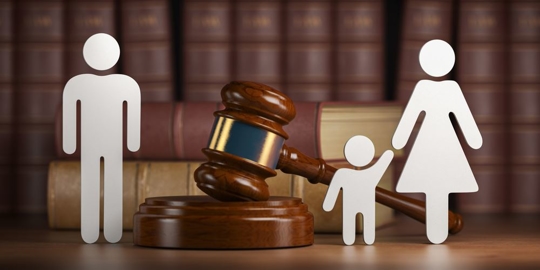Establishing child custody is a complex process that may require involving the court to decide custody based on what’s believed to be in the child’s best interest. There are two main types of custody orders: legal and physical.
Legal Custody
Legal custody refers to the responsibility of the parent(s) to make essential healthcare, education, and welfare decisions for their child. This responsibility often belongs to both parents during the marriage; however, after divorce or breaking up, that may change. Depending on the circumstances involved, the court will grant either sole or joint legal custody over the child(ren).
- Joint legal custody is when both parents share the right and responsibility to make crucial decisions regarding the health, education and welfare of their child.
- Sole legal custody means that only one parent has the right to make these decisions.
It’s important to note that while parents with joint legal custody share decision-making responsibilities, they may not agree on every decision. Parents should always communicate with each other on these decisions in order to provide a more stable environment for their child(ren).
Physical Custody
Parents can also have joint or sole physical custody, depending on the situation.
- Joint physical custody is when the child spends significant time with both parents by traveling from one house to the other. The child basically lives at both houses and has frequent and continued contact with both parents. It doesn’t mean 50/50 timeshare.
- Sole physical custody cases allow the child to live with one parent but may spend time with the other parent through visitation.
Because physical custody involves caring for the child’s daily needs and providing a safe household, the court takes the financial and behavioral wellness of each parent very seriously. Any documented instances or past reports/accusations of domestic abuse, neglect, or addictive behaviors will be considered when determining a custody and visitation plan. For example, if a parent has a history of drug addiction and neglect, they may not be granted physical or legal custody of their child because their behaviors and lifestyle are not deemed to be in the child’s best interests.
Criminal history is also a crucial factor when determining legal and physical custody arrangements. Parents in prison or those with a criminal record of repeat offenses and felonies are less likely to get legal or physical custody of their children.
How Does Visitation Work?
One key difference between legal and physical custody is visitation. If one parent has sole physical custody of the child, the other parent may still be able to spend quality time with their child by following a visitation schedule.
Additionally, parents may have different types of visitation orders, including the following:
- Visitation according to a very specific schedule is helpful for parents and children with complicated schedules. These families can devise a visitation schedule that reflects their availability.
- Reasonable visitation orders do not include specific details for the time children will spend with each parent. This means that instead of having a strict visitation schedule, parents can follow a more open-ended plan that works for both of them. Reasonable visitation plans are better for parents who can work together to create a visitation plan that works best for them. Attorney Schneider prefers a much more specific plan for parents who are no longer together, because their ability to agree on what is “reasonable” may be difficult.
- Supervised visitation is often a solution to ensure the child’s safety while still allowing them to spend time with the non-custodial parent. For example, if a child has not seen their parent in a long time and needs time to reacclimate, there are abuse or drug issues... supervised visitation can provide a safety net for both parent and child.
- No visitation can be a condition of cases where one parent is not able to visit the child safely.
The court wants both parents to be involved in a child’s life when possible and sare. The court will always put the child’s safety and best interests first in a custody and visitation case. They do this by evaluating key factors like the age and health of the child in order to help provide a safe and nurturing environment.
Other factors include the following:
- Emotional ties between the parents and child
- The ability of the parents to care for their child
- Any history of domestic violence or substance abuse
- The child’s ties to school and their community
Contrary to popular myths, the court will not automatically award physical or legal custody to one gender over another. Some people believe that the court favors granting custody to the mother, but there are many cases where the mother may not meet the requirements necessary to provide a stable home environment. In other cases, paternity may be contested, or the father cannot provide for the child, and the court will make their final decision with these details in mind.
What Can I Do To Get Custody?
Custody is never guaranteed because the court has to evaluate your unique circumstances to ensure a stable household for the child. However, an attorney can help you understand your options and put together a case on your behalf. Custody and visitation matters are complicated and each family is different, so it is important to consult a legal professional before your case goes to court.
If you have questions about your custody case, please call 619-304-8499 or speak with a compassionate legal advocate at The Law Offices of Andrea Schneider today.
